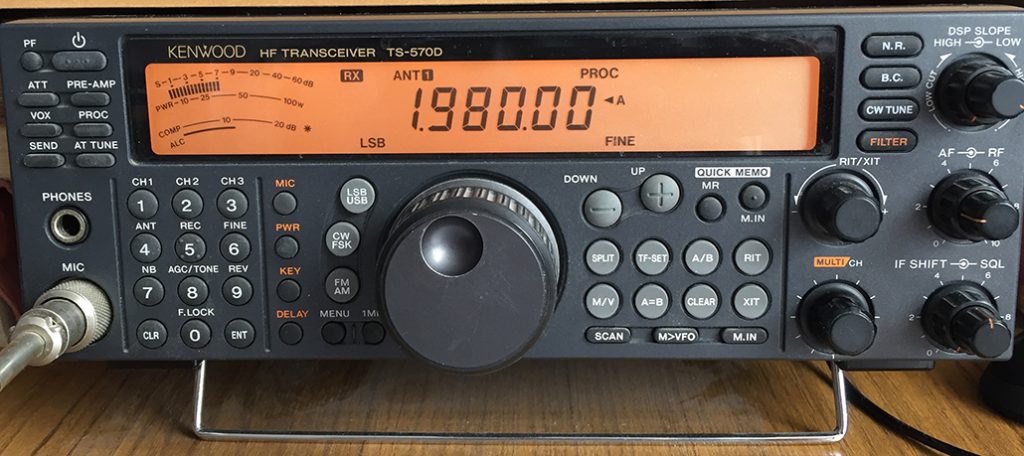20/2/2023: 10 and 12 metre bands:
The 10 metre band is already opening up with great propagation enabling contacts all over the globe. 12 metres has also been alive with stations from afar. But it’s not only the amateur bands that benefit from a sunspot maximum. Check out my page here. I’ve worked stations in Israel and Bahrain on the 12 metre band with only 30 Watts and a 5/8 wave vertical just six feet above the ground. Once the 10 and 12 metre bands open up, the world really is your oyster! The American repeater in Boston booms through here at 40dB over S9 at times. As we approach the predicted sunspot maximum in 2025, conditions can only get better.
20/2/2023: 11 metre band:
I think the 11 metre band is always worth a mention. I use it as a benchmark as to what’s happening with propagation on 10 and 12 metres. The 11 metre band now seems to cover 25 to 28MHz, and it’s buzzing. Check out my 11 metre page here.
Radios in use:
I use a Kenwood TS570D for 10 and 12 metres. Fortunately, I have two of these transceivers so I can dedicate one to 10 and 12 metres.
Don’t miss out on the sunspot cycle:
There are plenty of rigs on the market covering 10 and 11 metres, some also covering 12 metres, so getting on the bands is pretty easy. I use a CB antenna for 10 metres. It’s a 5/8 wave vertical. I think it was around £30 and it works really well. Hopefully, we’ll have a few years of great propagation so don’t miss out!
Sun spot cycle and radio propagation:
The sun spot cycle can have quite an impact on propagation. The sun spot cycle is a regular variation in the number of sunspots on the surface of the sun that occurs over a period of approximately 11 years. During periods of high sunspot activity, the sun emits more solar radiation and produces stronger solar flares, which can affect the Earth’s ionosphere.
The ionosphere is a layer of the Earth’s atmosphere that reflects and refracts radio waves. When the ionosphere is disturbed by solar radiation, it can cause changes in radio propagation, including:
- Increased radio noise: Solar radiation can produce ionization in the ionosphere, which can increase the amount of radio noise on certain frequencies, making it more difficult to receive signals.
- Enhanced propagation: During periods of high sunspot activity, ionospheric disturbances can enhance the propagation of radio waves, allowing them to travel further than they would normally.
- Increased absorption: Solar flares and ionospheric disturbances can also cause increased absorption of radio waves, which can weaken or block signals on certain frequencies.
The cycle can affect radio propagation by creating ionospheric disturbances that can increase radio noise. This can be a real pain! However, it can also enhance propagation. This is very noticeable on the 10 metre band.
More on propagation here.

